Losing a loved one is undoubtedly one of the most challenging experiences we face, and it often leaves us needing some time to grieve and process our emotions. Writing a bereavement leave letter can feel overwhelming, but it's an essential step to ensure that you take the time you need while also keeping your workplace informed. In this article, we'll guide you through creating a compassionate and respectful bereavement leave notification that conveys your needs effectively. So, let's dive in and explore how to navigate this sensitive process together!
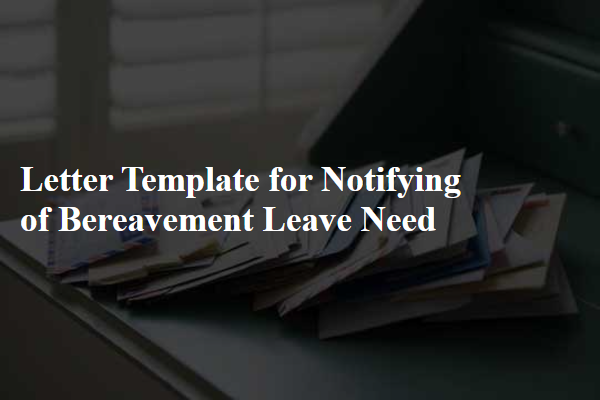
Clear subject line
Notifying HR of Bereavement Leave Request This notification addresses the need for bereavement leave after the loss of a family member. The request pertains to the company policy (referencing HR guidelines) regarding time off for mourning. It highlights the importance of notifying managers promptly to ensure a smooth workflow during absence. Essential details include the relationship to the deceased, the expected duration of leave (typically ranging from three to five days), and any particular arrangements needed at work. The importance of maintaining communication during this difficult time is also emphasized to facilitate understanding and support from colleagues and supervisors.
Direct notification of bereavement
A bereavement notification informs an employer about the need for leave due to the death of a loved one. Such notifications typically include crucial details like the relationship with the deceased, expected duration of absence, and any relevant documentation, if required. This type of communication often occurs within formal workplace settings, allowing the employer to process the leave request while showing compassion. Personal memories or reflections on the deceased may also be included to convey the emotional weight of the situation. Clear and respectful language in the notification is vital for maintaining professionalism during a sensitive time.
Specific leave dates requested
Employees may require bereavement leave to mourn the loss of a loved one. Bereavement leave typically covers three to five days, depending on the company's policy. Specific leave dates can vary based on individual circumstances, such as funeral arrangements, travel distance to the burial site, and time needed for emotional healing. Human Resources departments often recommend notifying the employer as soon as possible to facilitate workload management and plan for temporary coverage. Documentation, such as a death certificate or obituary, may be requested to substantiate the leave. Employees should provide clear details about their absence to ensure a smooth communication process during this difficult time.
Contact information for further communication
Bereavement leave allows employees time away from work to grieve or manage affairs following a death in the family. Employees typically need to inform their employer promptly about the loss, including details on duration for which leave is requested. Contact information for further communication includes the employee's phone number and email address. This ensures that HR or management can reach out easily for any required documentation or support during this difficult period. It is important for organizations to maintain sensitivity and understanding while handling such requests to provide the necessary support to grieving employees.
Expression of gratitude
An individual must notify their employer regarding a bereavement leave due to the loss of a loved one, expressing gratitude for understanding during a difficult time. This communication should include key details such as the relationship to the deceased, dates of absence, and appreciation for the company's support. A specific mention of company policies on bereavement and the compassionate response from HR can reinforce the sentiment. Clarity and respect in conveying the situation can foster an understanding workplace atmosphere that values empathy during personal hardships.

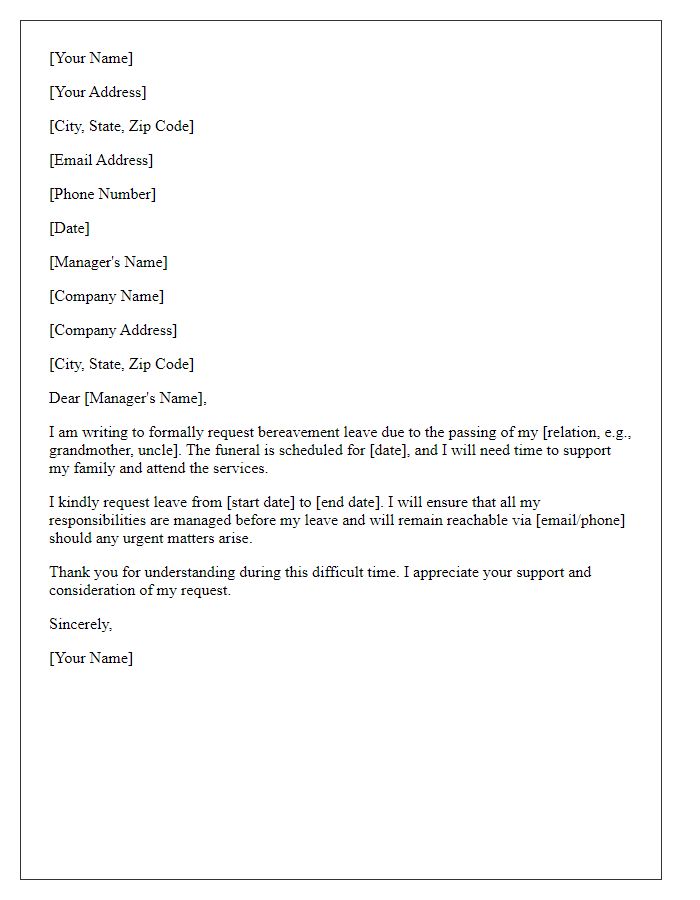
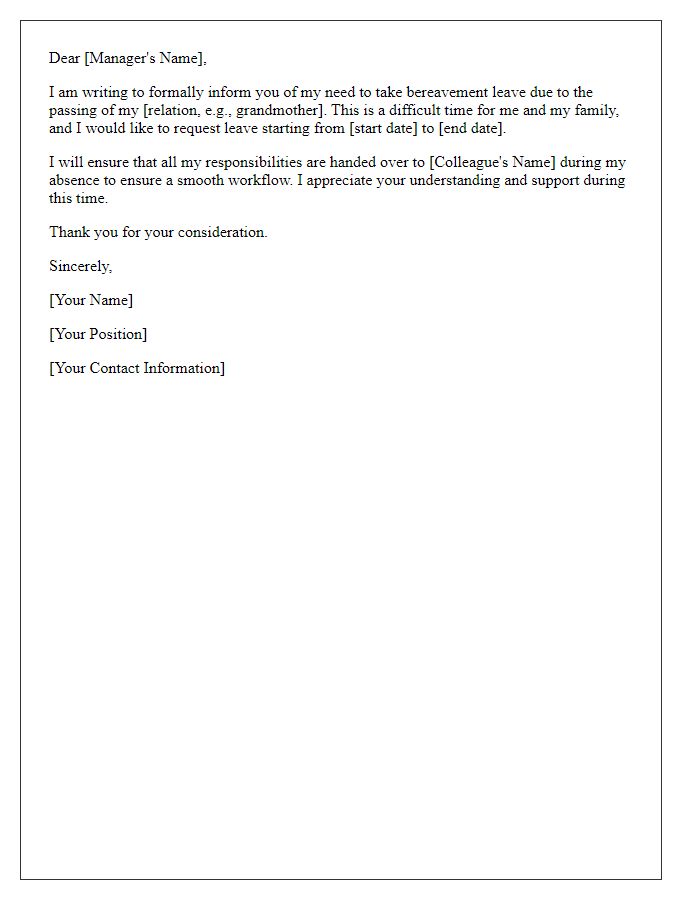
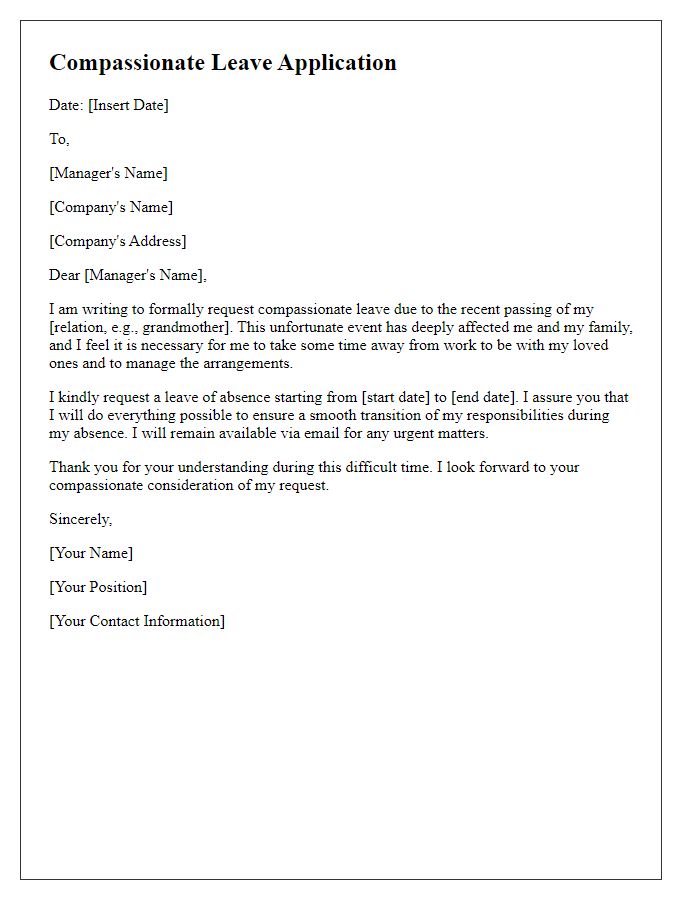
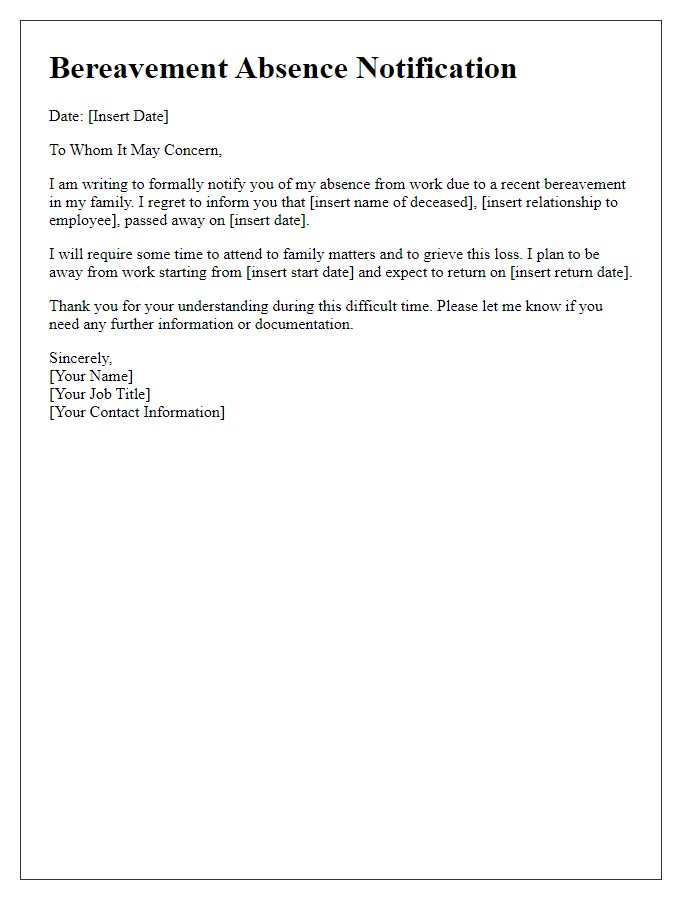
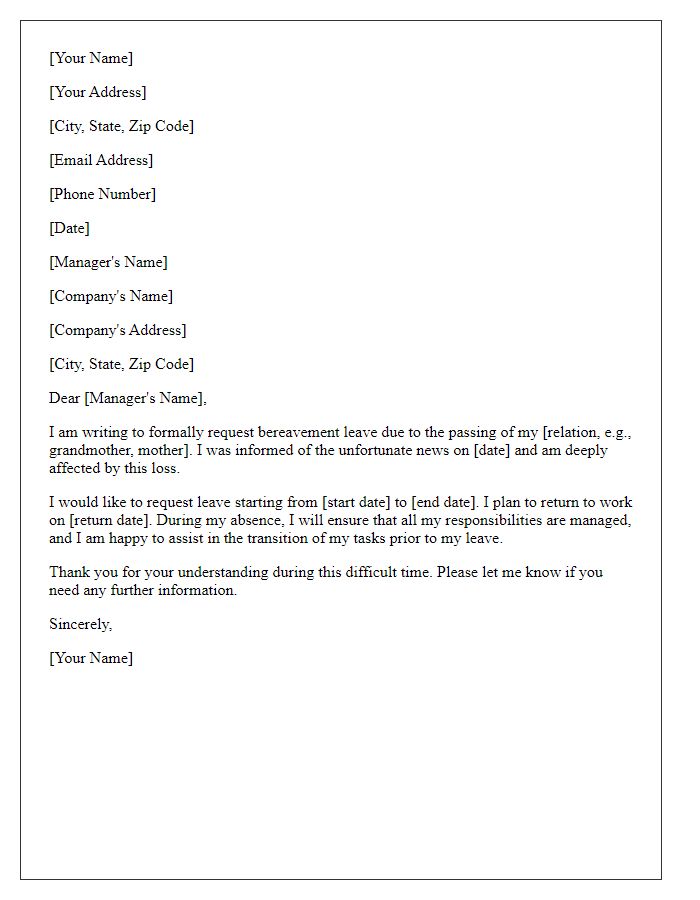
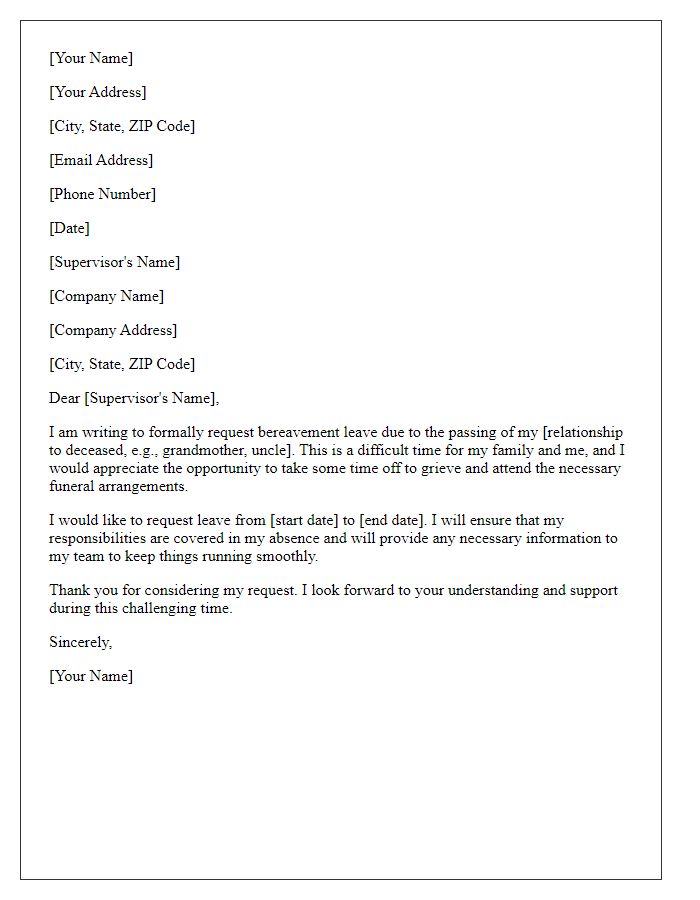
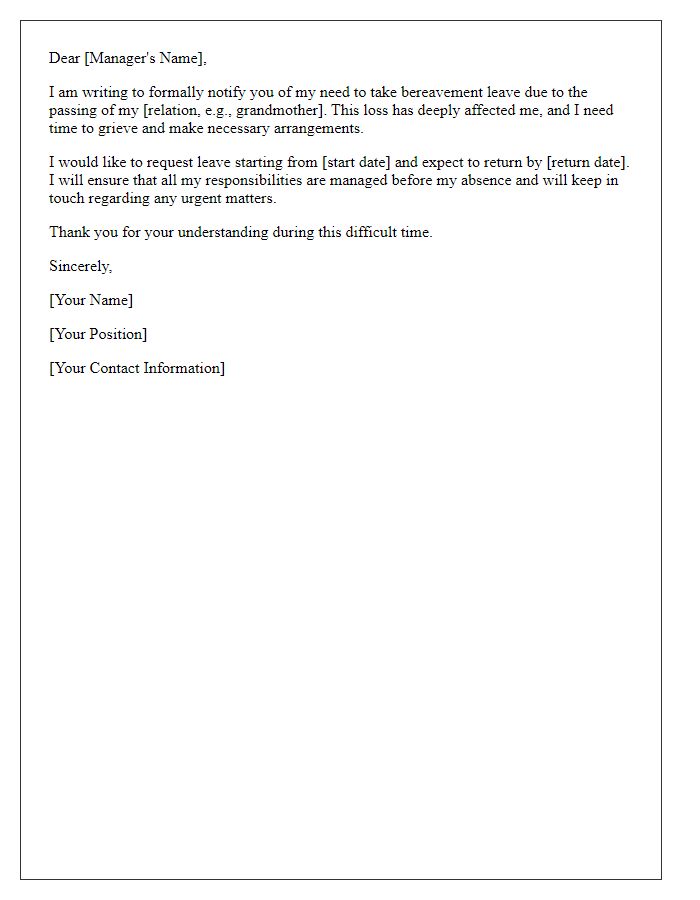
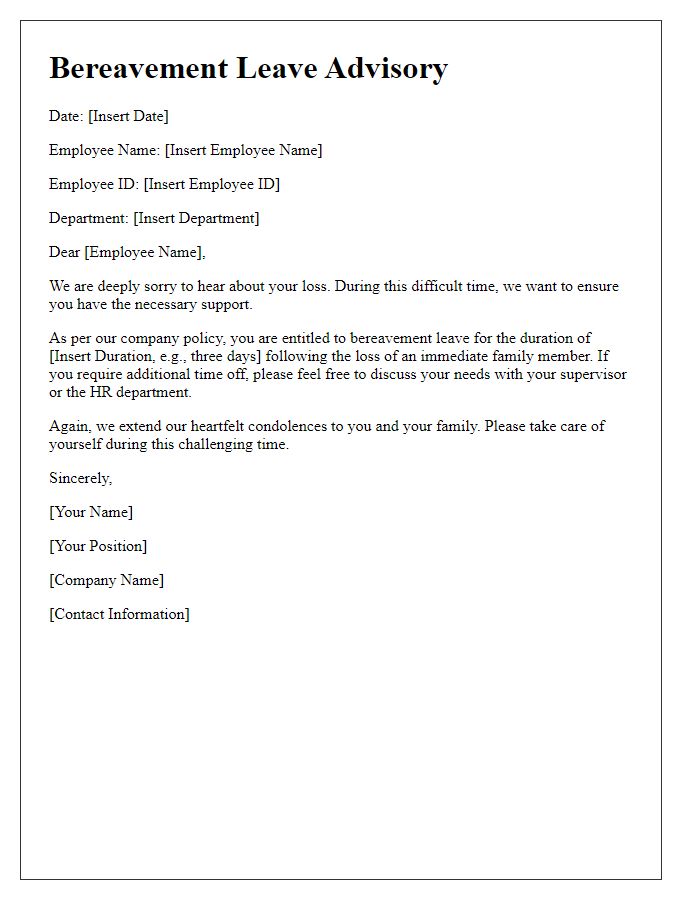
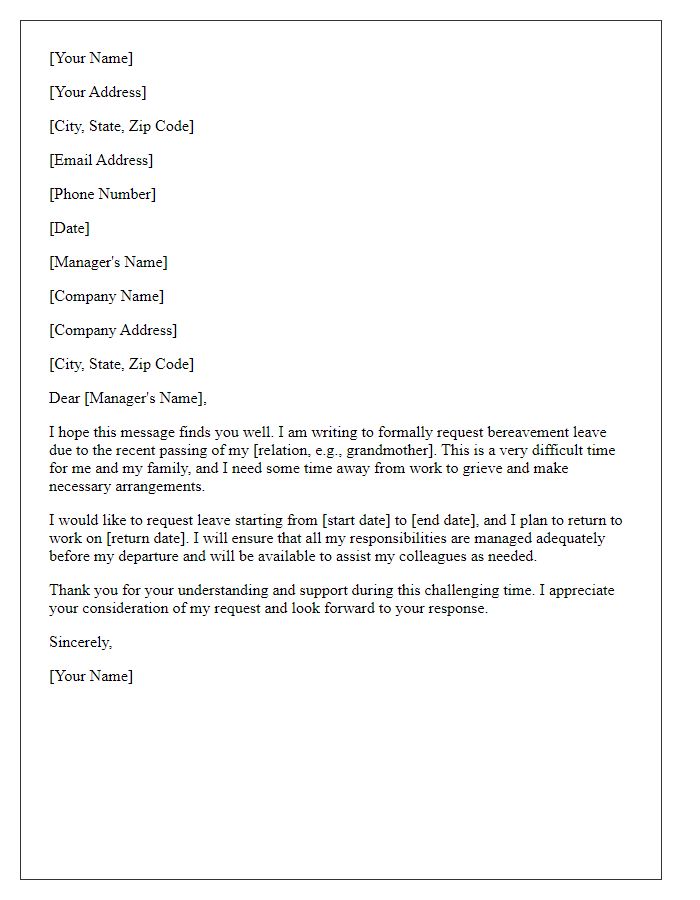
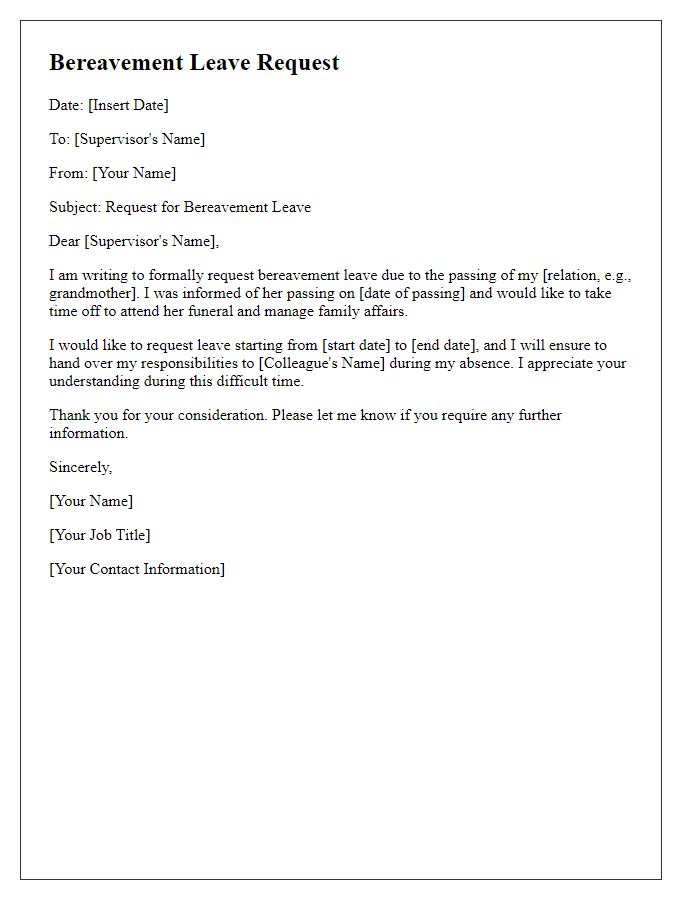

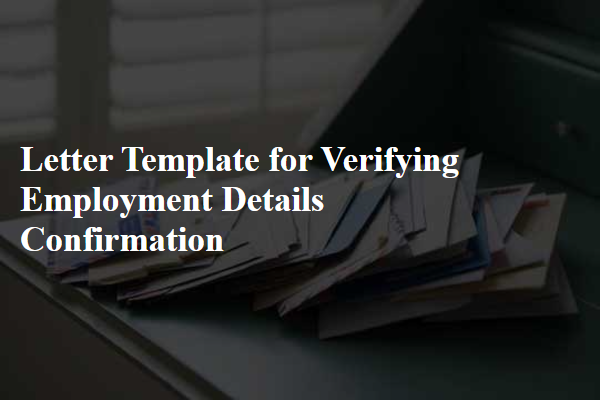


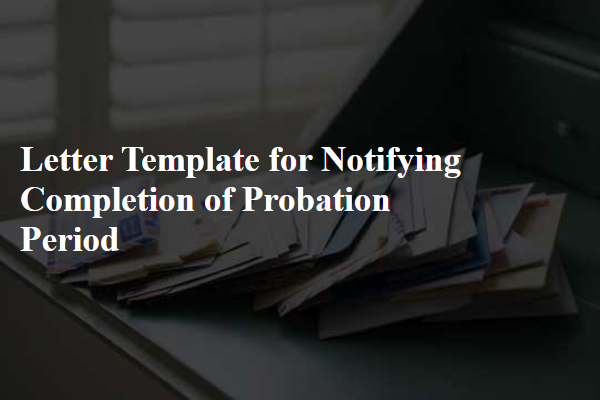
Comments